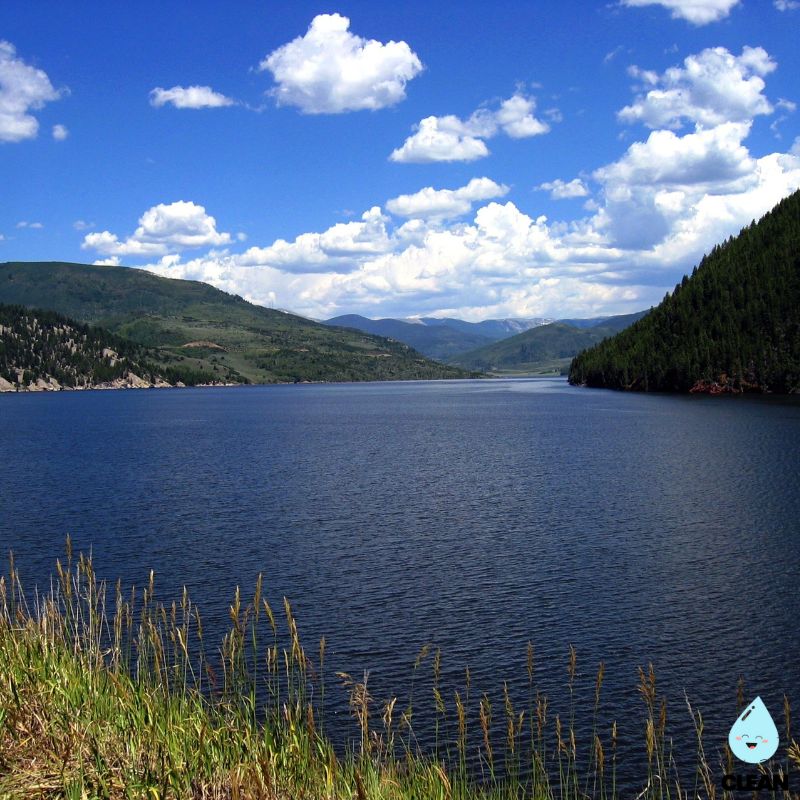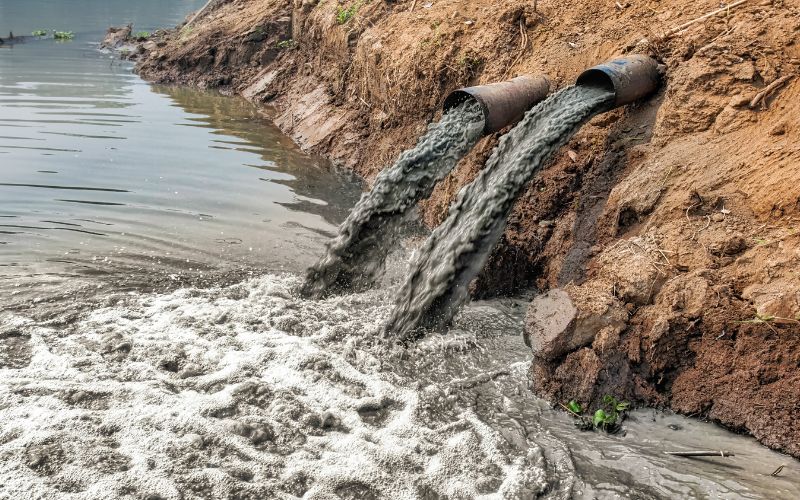Tennessee Water Quality at a Glance
PFAS contamination widespread
Is Tennessee Water Safe to Drink?
Generally Compliant, But Growing PFAS Concerns – Tennessee’s public water systems typically meet federal drinking water standards, but recent testing reveals widespread PFAS contamination affecting 60% of tested waters in Northeast Tennessee. Key concerns include industrial pollution near manufacturing sites, sewage sludge contamination used as fertilizer, and legacy contamination from military bases. While most utilities comply with current regulations, the emerging PFAS threat and agricultural runoff require enhanced filtration for optimal safety.
⚠️ Key Concerns for Tennessee Residents
- PFAS “Forever Chemicals”: 60% of Northeast TN waters contaminated; Bristol sewage sludge contains some of the highest PFAS levels detected in the U.S.
- Industrial & Military Contamination: Higher concentrations near manufacturing sites, military bases using firefighting foam, and wastewater treatment plants
- Agricultural Pollution: Sewage sludge contaminated with PFAS spread as fertilizer on farmland, contaminating soil and groundwater
- Statewide Testing Underway: Tennessee Department of Environment conducting comprehensive testing of all public water sources for 29 PFAS compounds
Read the full report below for detailed analysis, city-specific data, and actionable recommendations for Tennessee residents.
Tennessee – The Volunteer State – Water Quality Report 2025: PFAS Testing, Infrastructure Concerns & Safety across your state
Tennessee’s water infrastructure serves approximately 7.2 million residents across diverse geographical regions, from the Appalachian Mountains in the east to the Mississippi River in the west. The state operates through a complex network of over 474 public water systems, ranging from large municipal utilities like Metro Water Services in Nashville, serving over 450,000 customers, to smaller rural systems providing essential services to underserved communities. Tennessee’s water sources include the Tennessee, Cumberland, and Mississippi river systems, along with numerous reservoirs and groundwater aquifers that supply both urban centers and agricultural areas.
Despite abundant water resources, Tennessee faces significant infrastructure challenges. According to EPA’s 6th Drinking Water Infrastructure Needs Survey and Assessment (2020), Tennessee requires $8.7 billion in investments over the next two decades to maintain and improve drinking water infrastructure. The state has received substantial federal infrastructure investments from the Biden-Harris Administration’s Bipartisan Infrastructure Law to address emerging contaminants like PFAS “forever chemicals.” Tennessee’s commitment to water quality improvement is demonstrated through partnerships between the Tennessee Department of Environment and Conservation (TDEC), local utilities, and federal agencies working to ensure safe, reliable water access for all residents. The state has also allocated $1.35 billion from American Rescue Plan funds specifically for water infrastructure improvements.

Tennessee Water Quality: Current Status (2024-2025)
Statewide Compliance and Testing
- Overall Compliance: The majority of Tennessee’s 474 public water systems meet federal Safe Drinking Water Act standards, though comprehensive PFAS testing has revealed contamination in 60% of Northeast Tennessee’s rivers and lakes, with statewide monitoring ongoing through TDEC’s initiative across all public drinking water sources.
- PFAS Monitoring: TDEC has launched an unprecedented statewide sampling initiative testing all public drinking water sources for 29 PFAS compounds, with results showing contamination in 60% of tested waters in Northeast Tennessee, particularly downstream from industrial sites and military installations like the Holston Army Ammunition Depot.
- Infrastructure Investment: Federal funding through the Bipartisan Infrastructure Law has been allocated to Tennessee for emerging contaminant removal, with an additional $1.35 billion from American Rescue Plan funds supporting comprehensive water infrastructure improvements statewide to address the $8.7 billion in identified infrastructure needs over the next 20 years.
Major Water Sources and Challenges
- Tennessee River System: Serves much of East and Middle Tennessee, with documented PFAS contamination near military installations like the Holston Army Ammunition Depot requiring ongoing monitoring and potential treatment upgrades, with 3M settling for $98.4 million to address decades of contamination.
- Cumberland River Basin: Primary source for Nashville Metro Water Services and surrounding communities, maintaining good water quality standards with recent testing showing non-detect levels for regulated PFAS compounds, but facing increased demand from rapid population growth in Middle Tennessee.
- Infrastructure Aging Concerns: With $8.7 billion needed over the next 20 years for drinking water infrastructure improvements, Tennessee faces challenges with aging distribution systems, water loss rates exceeding 40% in some utilities, and emergency preparedness needs highlighted by recent severe weather events.
Emerging Contaminant Response
- PFAS Regulation Implementation: New EPA drinking water standards for PFOA and PFOS (4 parts per trillion) take effect in 2029, requiring Tennessee water systems to complete initial monitoring by 2027 and implement treatment solutions by 2029, with analysis showing Metro Water Services already meets the new standards.
- Advanced Treatment Deployment: Water utilities are implementing technologies including activated carbon filtration and reverse osmosis systems to remove PFAS, with Metro Water Services planning GAC Post Filter Adsorbers at both treatment plants by 2033 and having used powder activated carbon since before 1980.
- Legal Action and Accountability: Tennessee Attorney General Jonathan Skrmetti filed suit against 20 PFAS manufacturers including DuPont, 3M, and Chemours, alleging these companies knew their products contained harmful chemicals while failing to warn the public, with ongoing efforts to hold polluters accountable for contamination cleanup.
Rural and Disadvantaged Communities
- Infrastructure Disparities: Smaller water systems face disproportionate challenges with aging infrastructure, limited technical capacity, and higher per-capita costs for compliance with new federal regulations, particularly in rural East and West Tennessee where PFAS contamination has been detected in sewage sludge used as fertilizer.
- Targeted Federal Support: Dedicated funding streams through the Emerging Contaminant Small or Disadvantaged Communities program provide grants and forgivable loans to ensure equitable access to safe drinking water across Tennessee’s diverse communities, with Vanderbilt University receiving a $352,944 grant to identify at-risk communities.
- Emergency Response Capabilities: Recent severe weather events including Hurricane Helene have tested Tennessee’s water infrastructure resilience, leading TDEC to issue mandatory water conservation orders and boil water advisories affecting multiple East Tennessee counties, highlighting the need for improved emergency preparedness.
Looking Forward: 2025-2030
Tennessee’s water quality landscape is undergoing significant transformation as utilities prepare for new federal PFAS regulations taking effect in 2029. The state’s comprehensive PFAS monitoring program, combined with substantial federal and state infrastructure investments exceeding $1.4 billion, positions Tennessee as a leader in proactive water quality management. However, successful implementation will require continued collaboration between TDEC, water utilities, and communities to address the challenges of aging infrastructure, emerging contaminants like PFAS affecting 60% of Northeast Tennessee waters, and growing demand from the state’s expanding population while ensuring all Tennesseans have access to safe, affordable drinking water.
Recommendations for Tennessee Residents

Know Your Water Source
Contact your water utility to request annual water quality reports and ask about PFAS testing results. Visit TDEC’s website to access your local system’s testing data and understand any contaminants of concern in your area.

Support Infrastructure Investment
Stay informed about local water infrastructure needs and support utility rate structures that enable necessary improvements. Attend public meetings when utilities discuss infrastructure upgrades and PFAS treatment investments.

Consider PFAS-Certified Filtration
For areas with known PFAS contamination, consider NSF-certified activated carbon or reverse osmosis filters specifically tested for PFAS removal. These can provide additional protection while utilities implement treatment upgrades.

Report Water Quality Concerns
Contact your local water utility immediately for taste, odor, or color concerns. Report suspected contamination to TDEC’s Division of Water Resources for investigation and follow-up.

Practice Water Conservation
Support Tennessee’s water sustainability by implementing conservation measures like efficient irrigation, rainwater harvesting, and low-flow fixtures. Reducing demand helps utilities maintain system reliability and affordability.
Tennessee Cities We Cover
Nashville Water Quality
Comprehensive analysis of Metro Water Services, serving over 450,000 customers in Tennessee’s capital city. Includes information on water sources, treatment processes, infrastructure modernization, and PFAS monitoring.
Memphis Water Quality
Detailed assessment of Memphis Light, Gas and Water systems, covering water quality testing, source protection, and compliance with emerging contaminant regulations in Tennessee’s largest city.
Knoxville Water Quality
Analysis of Knoxville Utilities Board water systems, examining source water protection, treatment technologies, and infrastructure investments in East Tennessee’s major metropolitan area.
Frequently Asked Questions
Is Tennessee’s tap water safe to drink?
Most of Tennessee’s public water systems meet federal drinking water standards and are safe for consumption. However, ongoing statewide PFAS testing has revealed contamination in 60% of Northeast Tennessee waters.
The Tennessee Department of Environment and Conservation requires comprehensive testing across all 474 public water systems. Metro Water Services has reported non-detect levels for PFAS in recent testing conducted in November 2023, while Northeast Tennessee shows elevated levels near industrial sites and military installations. TDEC is conducting unprecedented statewide sampling for 29 PFAS compounds, with results posted on their PFAS dashboard. Water utilities are implementing advanced treatment technologies and the state has received substantial federal funding to address emerging contaminants. Residents should review their utility’s annual water quality report and stay informed about local conditions.
What are PFAS chemicals and why are they a concern in Tennessee?
PFAS (per- and polyfluoroalkyl substances) are synthetic “forever chemicals” that don’t break down naturally in the environment or human body.
Tennessee has documented PFAS contamination in 60% of surface water samples tested in Northeast Tennessee, particularly downstream from the Holston Army Ammunition Depot and other industrial sites. Sierra Club testing found some of the highest PFAS levels detected in the U.S. in Bristol sewage sludge used as fertilizer. These chemicals have been linked to cancer, liver damage, immune system effects, and other health concerns. The EPA finalized new drinking water standards in 2024 limiting PFOA and PFOS to 4 parts per trillion, requiring water systems to comply by 2029. Tennessee Attorney General Jonathan Skrmetti has filed suit against 20 PFAS manufacturers to hold polluters accountable for contamination cleanup.
How can I find out about my local water quality?
Tennessee residents can access comprehensive water quality information through several resources:
• Annual Water Quality Reports: Contact your water utility directly for their Consumer Confidence Report, which details all testing results and any violations or concerns
• TDEC Online Database: Visit the Tennessee Department of Environment and Conservation’s website to access testing results and compliance information for your local water system
• PFAS Testing Data: TDEC is conducting comprehensive PFAS monitoring across all public water systems and makes results publicly available on their PFAS dashboard
• EWG Tap Water Database: Use your zip code to search for contaminants detected in your local water system and get filter recommendations
Why does Tennessee have water infrastructure challenges?
Tennessee’s water infrastructure faces several interconnected challenges:
Aging Systems: Many water systems were built decades ago and need modernization to meet current standards and handle emerging contaminants like PFAS
Funding Gaps: The state requires $8.7 billion in drinking water infrastructure investments over the next 20 years, highlighting significant investment needs
Water Loss Issues: Some utilities report water loss rates exceeding 40%, representing costly inefficiencies that require system upgrades and modernization
Emergency Preparedness: Recent severe weather events including Hurricane Helene have exposed vulnerabilities in Tennessee’s water infrastructure, requiring improved resilience planning
The state is addressing these challenges through federal infrastructure investments, $1.35 billion in American Rescue Plan funds, improved regulatory oversight, and partnerships with utilities to prioritize the most critical improvements.
Quality News About Your Water
Get the comprehensive water quality news coverage you need with our dedicated US Water News Service. From coast to coast, we deliver in-depth reporting and expert analysis on PFAS contamination, EPA regulatory changes, infrastructure developments, and emerging water safety issues affecting communities nationwide. While mainstream media only covers the biggest stories, we provide the detailed, ongoing coverage that helps you understand the full scope of America’s water challenges. Whether you’re a concerned citizen, water professional, or community leader, our daily updates and analytical insights keep you informed about the issues that matter most to public health and environmental safety.
Contaminants of Concern

PFAS “Forever Chemicals”
Source: Industrial manufacturing, firefighting foam use at military installations like Holston Army Ammunition Depot, consumer products including non-stick cookware and stain-resistant textiles
Health Effects: Linked to kidney and testicular cancer, liver damage, immune system suppression, high cholesterol, and developmental effects in children
Current Status: TDEC’s statewide sampling initiative has detected PFAS in 60% of Northeast Tennessee surface water samples, with highest concentrations downstream from military and industrial sites EPA Limits: 4 ppt for PFOA and PFOS individually, with hazard index for other PFAS compounds

Sewage Sludge Contamination
Source: Land application of Class B sewage sludge from wastewater treatment plants spread on farmland throughout Tennessee, with extremely high PFAS concentrations detected in Bristol wastewater treatment plant sludge among the highest found in the U.S.
Health Effects: PFAS contamination spreads to groundwater, crops, and surface water through runoff, potentially affecting drinking water wells and food supply chains
Current Status: Sierra Club testing found PFAS concentrations in groundwater exceeding EPA drinking water standards, making water undrinkable without expensive treatment Regulatory Response: TDEC oversight of biosolids application with enhanced monitoring and potential restrictions on high-contamination sources
Please read – our information
The information presented on cleanairandwater.net is compiled from official water quality reports, trusted news sources, government websites, and public health resources. While we strive for accuracy and thoroughness in our presentations, we are not scientists, engineers, or qualified water quality professionals.
Our mission is to present water quality information in an accessible, real-world format that helps people understand what’s in their water and make informed decisions about their health and safety. We believe that complex environmental information should be available to everyone in a format that’s easy to understand.
We make every effort to ensure our content is current and accurate, but we cannot guarantee that all information is complete or error-free. This website should not replace official communications from your local water utility or health department. We always recommend consulting official sources for the most up-to-date information regarding your specific water system.
Clean Air and Water is not liable for any unintentional errors, omissions, or outdated information. The content on this site is provided for informational purposes only and should not be considered professional advice.


